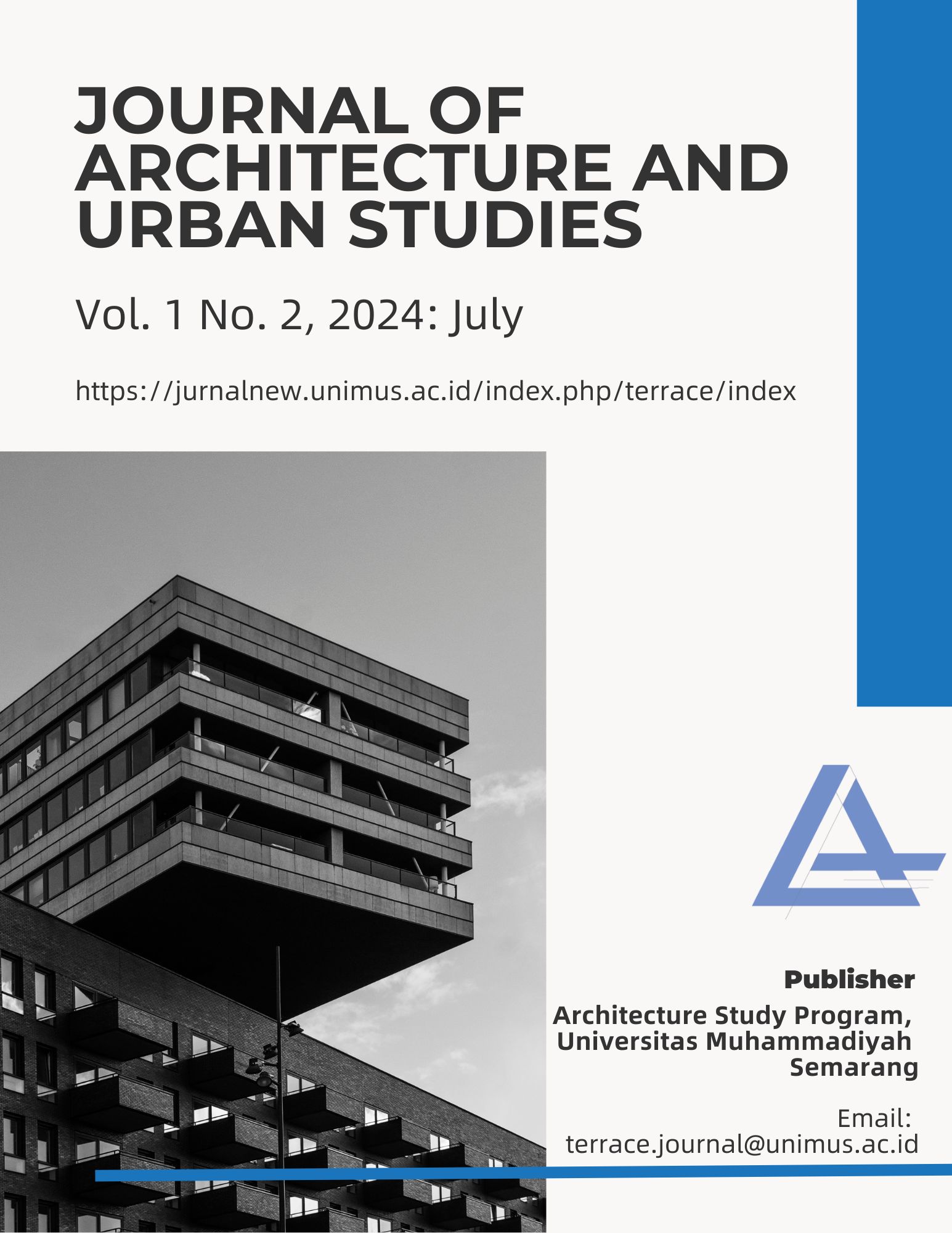Transforming Semarang: The Legacy of Thomas Karsten in Urban Planning and Architecture
DOI:
https://doi.org/10.26714/jaus.v1i2.687Keywords:
urban planning, urban architecture, Thomas Karsten, SemarangAbstract
The concept of urban planning in the 19th century was differentiated through traditional and modern approaches, but the impact of the Industrial Revolution created new relationships between Urban Planning and other Urban Arrangements such as economic pressures, social and political changes, and urbanization. Before the influence of the Industrial Revolution, industry did not arise in urban areas, but industry grew in the suburbs. The development of Semarang began to grow when the economic system first affected modern capitalism. Many traditional institutions are slowly being replaced by more contemporary ways. According to Thomas Karsten, society is formed by different groups, each with conflicts between themselves, his analysis of this social tendency can be seen in the urban planning process he carried out. The concept is centered on a particular whole, a continuum of organisms in the form of an organic whole. The four main ethnic groups that lived in Semarang during the colonial era were: the Dutch and other Europeans, Chinese, Arabs, and Javanese. By accepting conventions, they live in separate groups according to race. During Karsten's first experience in urban planning, he developed an alternative to this acceptable system that could be applied in Semarang. He introduced the idea of a residential division represented by certain types of housing based on economic status classes such as upper, middle, and lower. He tried to bring different races to live together in the same place when judging from their earning ability. He also pays special attention to Indonesia's tropical climate and emphasizes features that contribute to the overall urban space, such as the planting of vegetables and trees, and the planning of low-density residential areas.
References
F. Choay, The Modern City; Planning in the 19th Century. London: Studio Vista, 1980.
A. F. Sabaruddin, “Hakekat Hunian Vertikal di Perkotaan,” in Seminar Kota Layak Huni/Livable Space, Jakarta: Jurusan Arsitektur Fakultas Teknik Sipil dan Perencanaan Universitas Trisakti, 2018. [Online]. Available: https://www.trijurnal.lemlit.trisakti.ac.id/ls%0Alivas/article/view/2738
A. Y. Permana, S. Soetomo, G. Herdiman, and I. Buchori, “Transformasi Gubahan Ruang: Pondokan Mahasiswa di Kawasan Balubur Tamansari Kota Bandung,” Diponegoro University, 2014.
I. Cerdà, “Teoría General de La Urbanización,” Barcelona: Imprenta Espanola, 1867.
A. S. Nugroho, A. Suryono, and A. Setiawan, “Analisa Alun-Alun Kota Purworejo,” Semarang, 2010.
N. Peter J., The Indonesian City: Studies in Urban Development and Planning. Holland: Foris Publications, 1986.
A. Taylor, South East Asia. Abbot: Newton: David & Charles, 1972.
I. Santoso, “Penelusuran Historis Melalui Visual Bangunan Art Deco Sebuah Upaya Buffer Kualitas Wajah Kota ke Era Komersialisasi di Malang,” Mintakat J. Arsit., vol. 18, no. 1, 2017.
Noviani, N. Komang, and I. G. P. Y. P. Putra, “Identifikasi Lingkungan Permukiman Kumuh Kampung Kajanan,” Media Komun. FPIPS, vol. 16, no. 1, pp. 16-20., 2017.
M. C. Ricklefs, A History of Modern Indonesia Since 1300. London: The Macmillan Press Ltd, 1991.
A. Wright, Twentieth Century Impression of Netherlands India; Its History, Commerce, Industries and Resources. London: Arnold Lloyds Greater Britain Publishing Co. Ltd, 1909.
H. F. Tillema, Van Wonen En Bewonen, Van Bouwen, Huis En Erf, Tjandi. Semarang, 1913.
P. A. Wijayati, “Eksistensi Pasar-Pasar Tradisional di Kota Semarang Tahun 1873 – 1914,” Forum Ilmu Sos., vol. 36, no. 2, pp. 167–183, 2009, [Online]. Available: https://journal.unnes.ac.id/nju/FIS/article/view/1506/1651
Nieuwenhuizen, B. C., D. R. S., B. E. A. W., C. I. L., and & M. M., “TBS-Behandeling Geprofileerd,” 2011. [Online]. Available: https://repository.wodc.nl/handle/20.500.12832/1837
M. Jose, M. Nichols, and J. Stevens, “Contributions of Diversification, Promotion, and R&D to the Value of Multiproduct Firms: A Tobin’s Q Approach,” Financ. Manag., vol. 15, pp. 33–8, 1986.
A. Kusnandar, “Revolusi Industri 1.0 Hingga 4.0.,” Forkomsi FEB UGM, vol. 305, no. 1, 2019.
A. S. Muljadinata, “Karsten dan Penataan Kota Semarang,” Institut Teknologi Bandung, 1993.
Downloads
Published
How to Cite
Issue
Section
License
Copyright (c) 2024 Journal of Architecture and Urban Studies

This work is licensed under a Creative Commons Attribution-NonCommercial 4.0 International License.












